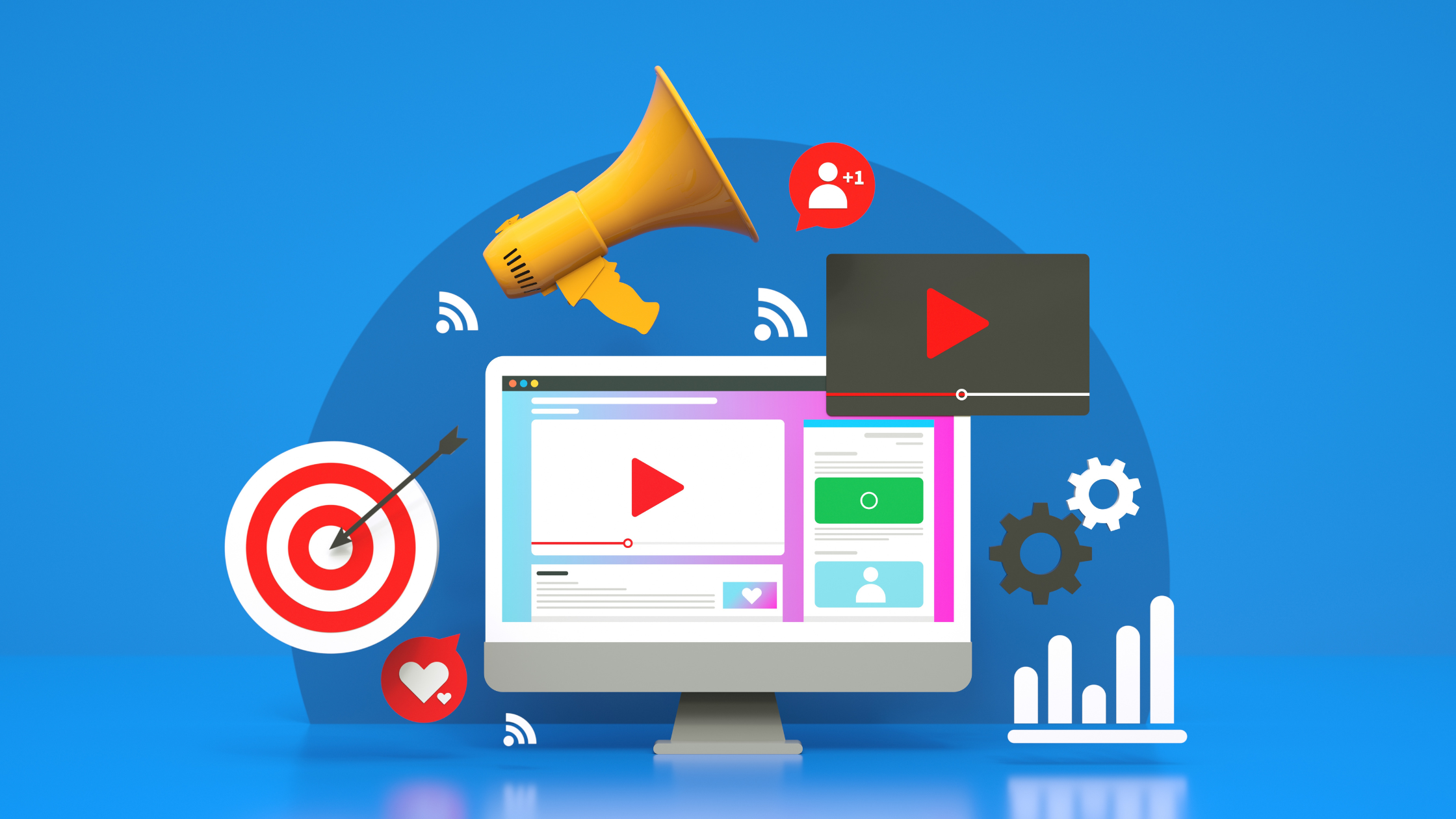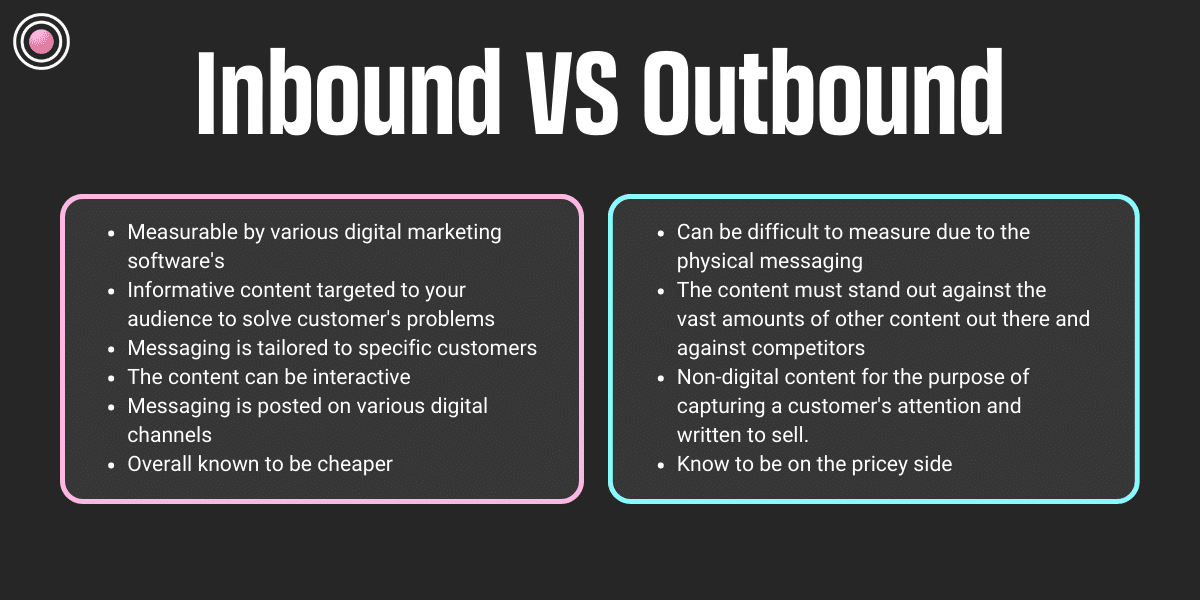
-
Cora Dixon
- 7 Min Read
- Blog, Inbound Marketing
How to Run an Inbound Marketing Campaign
Inbound marketing campaigns are so valuable to businesses nowadays. They aim to attract customers through content and experiences that speak to their clients directly. In this blog, we will take a look at how to run an inbound marketing campaign.
What is inbound marketing?
Inbound marketing is businesses creating and using valuable content and experiences to attract customers. It specifically means creating content and communications that align with your customer’s values and needs to inspire long-term customer relationships.
Your customers come to your to solve their problems or provide services that benefit them. Inbound marketing is all about – providing what your target audiences are looking for and tending to their needs.
These solutions and forms of content can come in many different forms, such as:
- Blog posts
- Videos
- Webinars
- Infographics
- Email marketing
- E-books and online magazines
- Social media output
- Email campaigns
Inbound vs Outbound marketing
Inbound: Aligning the content you put out to your audience’s needs and wants, essentially bringing them to you.
Outbound: Outbound marketing differs slightly from this and involves engaging with customers to encourage their interest in a product. It is typically a more aggressive tactic and has expectations that at least someone who was reached out to will convert.
It relies on physical outbound marketing techniques such as;
- Billboards
- Cold calling
- Display ads
- TV ads
- Newspapers
- Radio
The goal of outbound marketing is to put your company and brand in the right place at the right time, alongside building authentic relationships through engagement and targeted communications.
What is an inbound marketing campaign?
An inbound marketing campaign aims to target customers directly. This is so you can place your services or products in front of a customer who needs them. Having the understanding of how to run an inbound marketing campaign and the ability to use great inbound marketing techniques can efficiently reach your target audience, and fingers crossed, they convert.
SEO: SEO fits into inbound marketing as it is a universal way of generating leads and opportunities. SEO optimises the content you are producing to appear in search queries from users. If you are determined to increase your organic search you 100% need SEO.
Inbound marketing relies on SEO from extensive research and audits to formulate a long and short-term inbound marketing strategy. When using SEO you edit your website and meta to appear on Google or other search engines. An inbound marketing strategy aims to drive traffic to your site and your website should be developed under SEO principles.
Content creation: Content creation is one of the most effective inbound marketing campaign strategies out there. Creating content has various positive impacts such as brand authority and establishment, site authority and ultimately creating sales and conversions.
Let’s look at the different forms of content creation in more depth in order to fully understand how to run an inbound marketing campaign.
- Blog posts – Maintaining relevant blog content can attract your audience and, in turn, create a loyal relationship with your customers. Having a solid relationship with your customers can lead to an increase in profitable customer actions. This is because of the relationship you can build and the trust your readers will put into your business.
- Videos – Platforms like YouTube boast a massive 2 billion users and a great opportunity to reach your target audience. You could create various content such as how-to videos and product demonstrations.
Videos are a great way to increase the length of time visitors spend on your website. If someone searches for ‘how to begin SEO’ and the video on your website details this step by step, it increases value. Valuable content encourages users to remain on your site or refer back to it in the future.
- Webinars – Webinars offer complete value to your audiences immediately, Leaders can communicate information straight away and offer training and their expertise. This content can build relationships by offering value and ten in turn create a loyal community leading to sales.
- Infographics – Infographics are a great way to present information and statistics in an organised fashion. It’s normally a more colourful fun way to present information.
Include graphics and easy-to-read text to go hand in hand with the information. You can use these to tease parts of your blog posts on social media. It would be valuable to include a CTA to view the complete post online, resulting in more traffic!
- Email campaigns – Emal campaigning is huge and according to HubSpot 64% of businesses target their audience via emails. Remember to keep the number of emails your push out minimal this is to not bombard your audiences with content. Try to send them the most valuable content you can rather than lots of different emails with irrelevant stuff.
- E-books and online magazines – Providing your community with long-form content about your industry shows expertise. In most cases, an e-book requires a user to provide their email address in order to download. In turn, this can support your email marketing campaigns by providing you with customer data.
It is vital that you remember when producing e-books that these are not advertisements for your brand. These are simple ways to promote your knowledge and insights to gain and retain your audience.
- Social media output – Social media is essential to push content you have created in front of your audience. It’s great knowing what content you need to make but understanding how to broadcast it is the next step.
You can use social media to grab the attention of your target audience by placing content directly in front of them. This avoids aggressively forcing content upon your community.
It may be worth considering running a digital content audit to look at the content you put out and assess it all to discover where the strengths and weaknesses lie.
How to run an inbound marketing campaign?
To understand the ins and outs of how to run an inbound marketing campaign, you need to consider all appropriate steps to make it as effective as possible.
- Set some goals: Base these on where your business currently stands and where it wants to be. This is also where you can set some KPIs also.
You can evaluate what your competitors are doing and the current performance of your industry market. Whilst seeing where your company currently fits in the market to determine your business goals. Create a buyer persona to determine who you need to target and how.
- Get found: With an understanding of your audience you must conduct keyword research to determine how people search for relevant content. Through this extensive research, you can determine what keywords to target to attract the correct people to your site. Onsite SEO allows you to be found by optimising each page of your website. You do this by using appropriate and effective keywords based on the content you are providing.
Blogging and posting are effective ways to get found. When blogging about content people are searching for, such as your customers’ pain points or main industry topics, you drive traffic.
PPC provides the opportunity to place you in front of users who are searching for the terms you have bid on. Through strategic bidding and advertising, you can drive traffic and clicks to your site, increasing the potential client conversions you want.
- Get leads: Provide premium content such as e-books, webinars etc that your website visitors cant say no to. If you present your audience with valuable, exclusive content consider including a form your visitors must fill out to view. If the content is desired, they won’t hesitate to fill this out whilst indirectly providing data to support email campaigns.
Landing pages are the home of premium content. This is where you should send your clients to capture their information and new leads. An effective landing page is designed to give the user the desired action to take when visiting your website.
Create call-to-action buttons to facilitate conversions and leads. Use eye-catching branded buttons that your visitors will feel almost forced to click by how attractive they are. They lead users to premium content pages such as landing pages to purchase products or services.
- Drive traffic: As your website optimises and begins to rank higher, you must ensure you’re promoting your content through various channels.
On social media, create a few varied posts centred around each piece of content. This presents you with an opportunity to promote the same content. It allows you to increase your potential to attract a wider audience and new eyes each time. Make sure to keep an eye on the analytics of these posts whilst experimenting with time posting to see what works best.
Email newsletters can forward your content to your target audience and users who have provided you with their details immediately. Emails can be personalised whilst forming a one-to-one relationship with your community whilst sharing valuable information to customers.
- Retain your customers: Completing a lead and sale is great, but the established relationship doesn’t need to fizzle out. Once you have gained a new customer, focus on bringing them back to your site again and again. This can give them the opportunity to convert again! They can also advocate for your brand themselves and promote it via word of mouth!
After all, there’s no better form of recommendation than from someone who has been through an experience before. To retain customers, consider referral programmes. You could provide the referee and the user who referred them with an offer in this process. Consider providing segmented newsletters and continue to update users on the latest in the industry, and showcase your expertise.
The last step is evaluating your inbound marketing success. You can do this by analysing various metrics, including;
- click-through rate
- conversion rate
- engagement on social posts
- reviewing keyword research
- email open rate
It is vital to analyse each effort of your marketing campaigns so you know how to run an inbound marketing campaign. This is to fully understand what is working for your business and what maybe needs improving.
For example, if a morning social media post always does well, keep that on the content calendar. If posting at night sees no engagement, maybe schedule it for a different time, so all your content is effective.
At ROAR, we offer digital marketing consultancy. We provide a fresh pair of eyes on your business which can be all you need to further develop your strategy.
Contact us today and set up a call with one of our team to discuss further developments for your online business.








